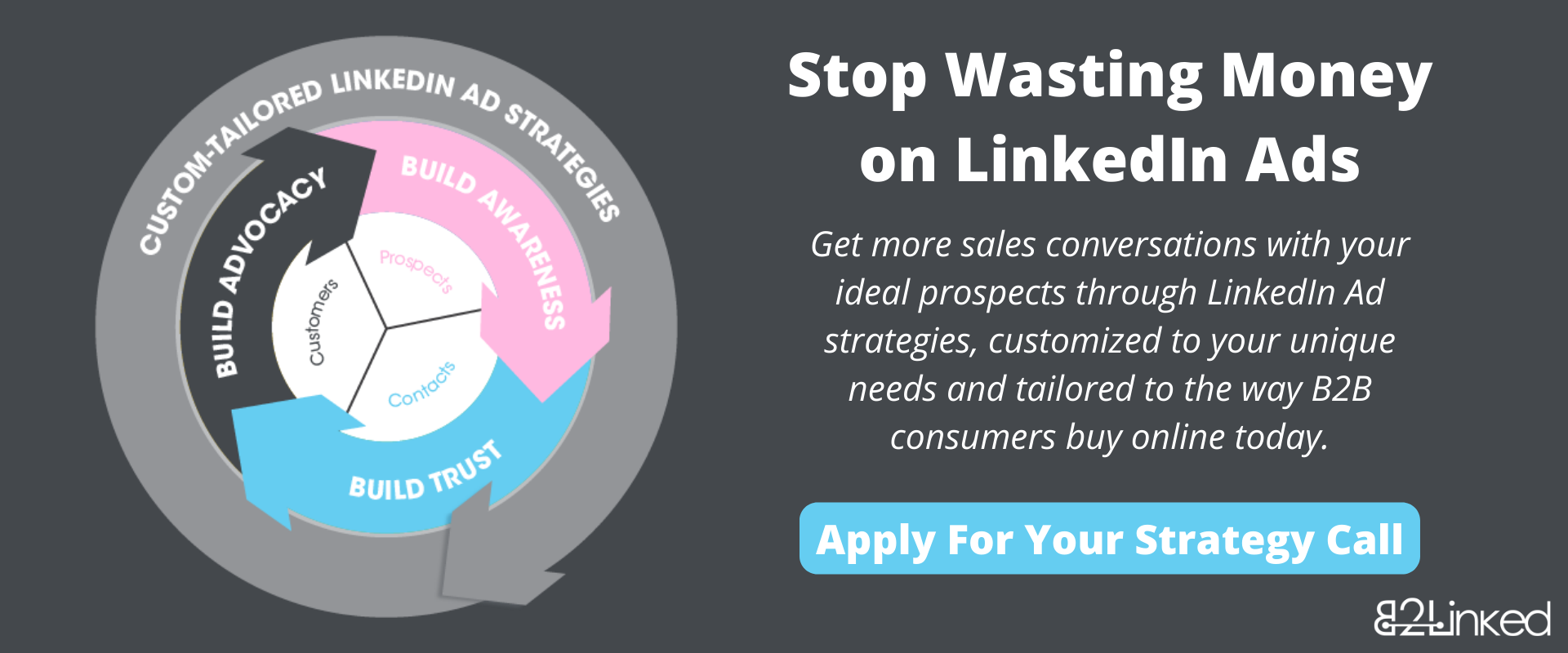
When to Gate vs Ungate Your Content on LinkedIn Ads


Unlike Google, LinkedIn isn’t an intent channel, it’s an awareness channel. If your audience has never heard of you, running LinkedIn Ads that elicit booking a demo or starting a free trial is going to fail 95% of the time.
When running LinkedIn Ads to a cold audience, it’s best to start by promoting offers that will educate, add value, and ultimately build trust. Content offers, such as podcasts, eBooks, webinars, online courses, and more are a way of accomplishing this (check out this post for more on selecting the right offer to promote on LinkedIn Ads).
However, the recent talk of demand generation has led many to debate whether content should be gated or ungated. Because of poor lead generation tactics many marketers have deployed in recent years, consumers are growing increasingly aware and wary of giving away their personal information out of fear of aggressive sales follow-up.
There are some that now argue that the best way to market online is to promote content ungated. Though there’s a lot of truth to all this, settling the debate isn’t as simple as saying that all content needs to be ungated.
So how do you know when to gate or ungate your content on LinkedIn Ads? Here are three tips to help guide you in this decision…
CONSIDER YOUR GOALS
When deciding whether or not to gate or ungate your content, it’s important to consider your intent. What’s your reasoning for gating a piece of content? What’s your reasoning for ungating it?
If your goal is lead generation, then it might make sense to promote a gated piece of content as part of your LinkedIn Ads strategy.
If your goal is to educate and generate awareness, then you might want to promote your content ungated.

CONSIDER YOUR OFFER
Some offers naturally make sense to gate. Some make more sense to ungate.
A newsletter, for example, is an offer that naturally makes sense to gate because an email address is required in order to educate and nurture those who opt in. An exclusive webinar is another example because you need an email address to send join information.
Offers like booking a demo request or a free trial are examples of offers that are typically promoted further along the customer journey and are best left gated.
Podcasts, blogs, and online communities are examples of offers that are best left ungated in order to make them easily consumed. They also provide a way of further educating, adding value, and nurturing opt-ins through regularly updated content.
Guides and eBooks are offers that can either be gated or ungated, depending on their contents.
Remember, though, that these are all just examples. You might consider different use-cases for different forms of content, depending on your goals and the relevance of that content at different stages of your customers’ journey.
TURN IT INTO A TEST
If you’re still on the fence about whether or not to gate a piece of content, you might consider testing it gated first. See if it’s an offer that your audience is willing to give their information for and if they’re quality leads that convert to MQL and SQL at a high rate.
If lead volume is low, test it ungated. And after that, if you’re still not seeing desired results, you might consider testing different messaging or a new offer altogether.
CONCLUSION
While the recent shift to promoting ungated content is a welcome one, that doesn’t mean that all offers should be ungated. Knowing which pieces of content should be gated and which should be ungated can be a strength to your LinkedIn Ads strategy.
Are there any tips you might add to this list? What helps you in deciding whether or not to gate vs ungate your content on LinkedIn Ads? Comment below!
And if you want to get more sales conversations with your ideal prospects, apply to work with our team at B2Linked. We’ll help you craft and execute a custom-tailored LinkedIn Ads strategy for maximizing ROI, improving efficiency, and reducing costs on the platform.
Written by Eric Jones
